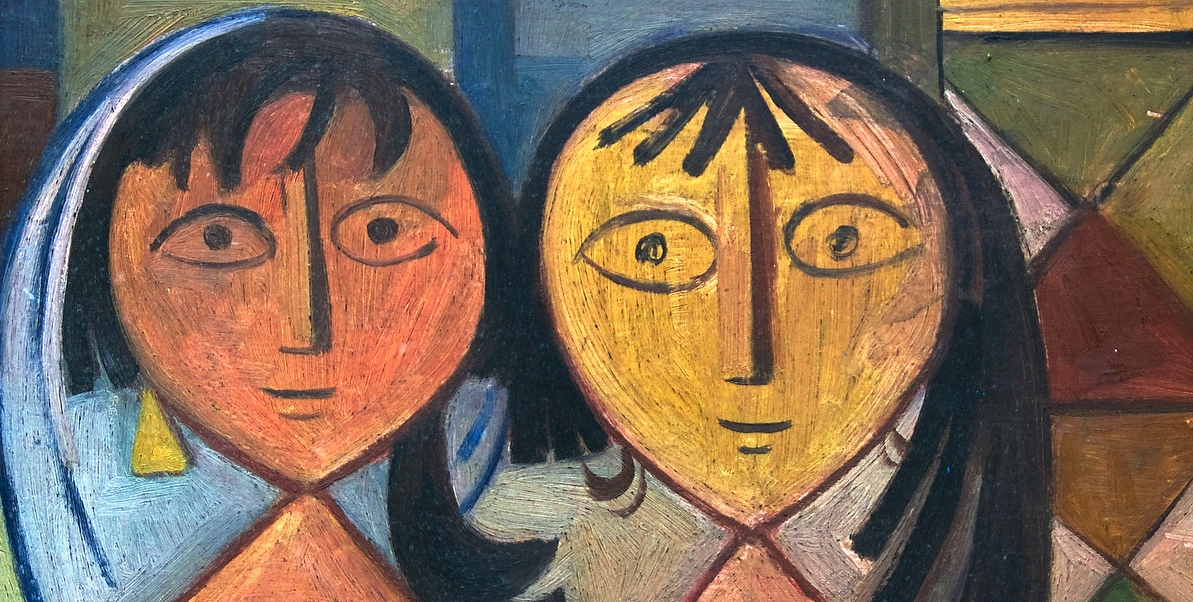The Rise of Visual Fine Art in Iraq
By Yaqthan Chadirji
July 2023
“Visual Arts.” According to the Encyclopedia Britannica and the Internet Encyclopedia of Philosophy, includes various forms of drawings (such as oil and watercolour paintings and collage), sculpture, graphics, and architecture. As for art in general, it encompasses all forms of art, including visual arts, ornamentation, calligraphy, storytelling, singing, and dancing, among others.
This article focuses on the period between the establishment of the Iraqi state in 1921 and the early 1960s.
Prior to the establishment of the Iraqi state, visual arts in Iraq, whether in the form of drawings or sculptures, were virtually absent, especially during the period between the fall of the Abbasid (1258 AD) state and the establishment of the Iraqi state (1921). If they existed, there is no documentation of them.
In 1921, Prince Faisal was brought in by the British and crowned as the King of Iraq. During that period, a few Iraqi painters and sculptors emerged, although they were very few. They produced documented artistic works and taught art and sculpture in various schools in Baghdad, which later spread to other cities in Iraq. Without a doubt, they were the first seeds in the formation of visual arts in Iraq.
Who are these individuals? And how did they emerge?
They are Iraqis from Mesopotamia who joined the Ottoman army under the mandatory service law. Being officers in the Ottoman army, they enrolled in the Military Academy in Istanbul, which included teaching art subjects. After completing their studies at this school, some of them were appointed as art teachers in schools in Istanbul, and possibly in other schools in Ankara. After the establishment of the state of Iraq in 1921, many of them returned to their homeland.
However, they were influenced by the Turkish-European school, and their subjects were influenced by the European style of landscape and daily life. This relied on depicting nature and daily scenes in a traditional style, especially in the late 1920s and early 1930s.
Some of these artists include Osman Beck, Natiq Maroua, Shawkat Al-Khaffaf (also known as Shawkat Al-Rassam), Mohammed Saleh Zaki (1888-1973), Ehsan Fahmi (father of Atta Sabri), Akram Al-Qaymaqchi, Nasser Awni, Hajj Mohammed Salim Ali Al-Mawsili (1883-1941),(father of Jawad Salim) , Asim Hafez (1886-1978), Abdul Qadir Al-Rassam (1887-1952), and Fathi Safwat (1896-1966). These are the Artists that we were able to obtain through our search.
.
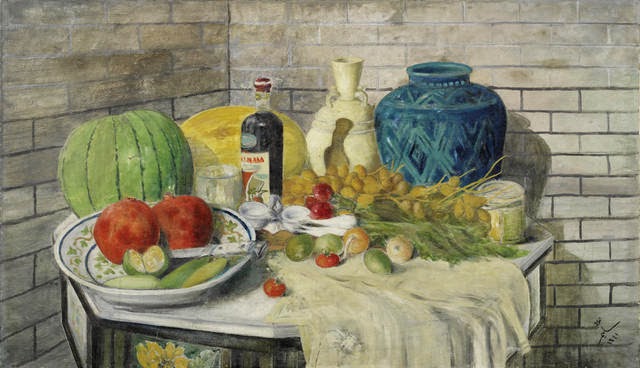
Mohammed Salim, (Father of Jawad Salim), Still life, 1941.
First Generation Artists:
A brief overview of some of these first-generation artists: In my opinion the two who most ignited the movement:
Fathi Safwat Qirdar:
(1896-1966) Kirkuk:
When World War I broke out, he was called for mandatory service in the Turkish army as a reserve lieutenant and was sent to participate in the Tulkarm Battle in 1918 (a city in Palestine). There, he was captured by the British army and was later transferred to a British Camp near Alexandria, where he filled his spare time with painting and sculpture.
After the war, he decided to go to Istanbul and while there, he enrolled in the “Turkish Academy for Teachers”. Upon graduating, he was appointed as an art and sculpture teacher at the school. In 1926, he returned to Iraq at the request of Sati’ Al-Husri, who had re-established the Teacher’s Institute (which was initially established by the British during the early occupation), and he appointed Fathi Qirdar as a teacher of arts. Many students who graduated under his supervision taught art in various schools in Iraq. Famed artists like Atta Sabri and Qassim Naji, among others were taught by Fathi. Hence his contribution to the establishment of visual arts in Iraq is obvious.
One of Fathi Safwat’s most significant works in sculpture includes statues of King Faisal I, King Ghazi I, the poet Jamil Siddqi Al-Zahawi, and the educator Ali Mazloum. All of these are half-body sculptures. He aslo designd the emblem of the Iraqi Kingdom.

Fathi Safwat (1896 -1966), with sculpture of King Fiasal the Fisrt.
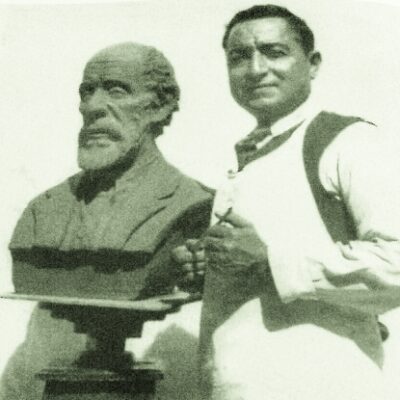
Fathi Safwat with sculpture of the poet Al-Zahawi.
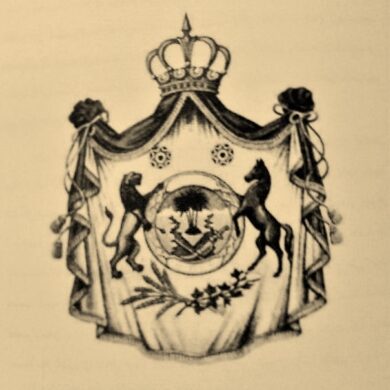
Fathi Safwat, Shi'ar the Iraqi Kingdom.
Abdul Qadir Abdul Rahman:
(1887 Maysan -1952)
He is well known as Abdul Qadir Rassam and was born in Qal’at Saleh, Maysan Governorate, southern Iraq. He studied art alongside military sciences at the Military Academy in Istanbul. He graduated in 1905 and was appointed as a reserve officer in the Ottoman army in Qal’at Saleh. During the British occupation, he was appointed as a teacher by the British to teach art and geography at Qal’at Saleh. Later, he moved to Imara city and then to Baghdad. He was influenced by the Turkish-European realistic school when he was a student in Istanbul. Hence his paintings were mainly of landscapes, houses, historical sites, and some murals such as the one inside the “Al-Hamra Cinema.” in Baghdad.
He showed great interest in portraying the landscapes of the Tigris and Euphrates rivers and the countryside. He is considered one of the early pioneers of realism in Iraqi visual art and left behind a collection of paintings representing natural scenes that stemmed from his talent and personal experiences. His style of painting was detached from the art movements that were prevailing in Europe. His style remained classic.
Abdul Qadir Al-Rassam was one of the founders of the Friends of Art Society (whose members included Jawad Salim and Faiq Hassan) and his paintings were displayed in various exhibitions.
The works of some of these early painters were first showcased at the International Trade for Industry and Agricultural Fair held in Baghdad in 1933 under the patronage of King Faisal I, more details can be found in section 10.
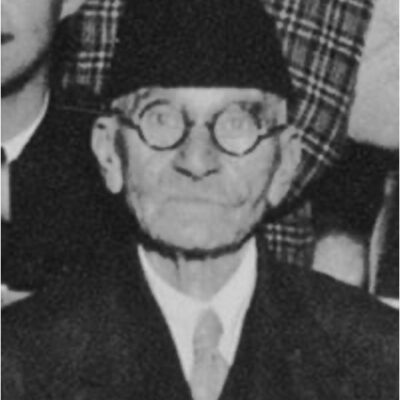
Abid Al-Qadir Al-Rahman Al-Rassam (1887-1952).
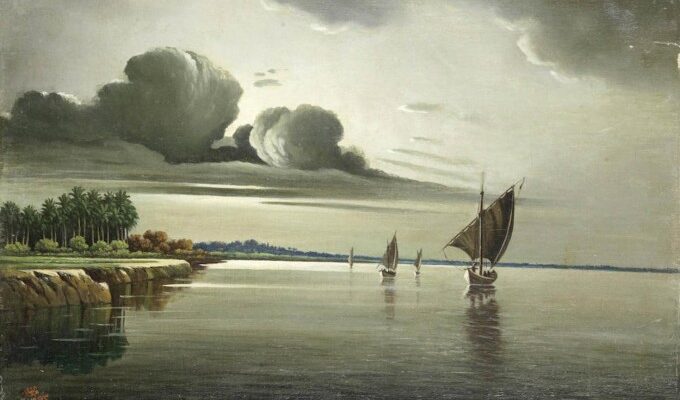
Abid Al-Qadir Al-Rahman Al-Rassam, ``View of Tigres`` 1934, Oil on canvas. Barjeel Art Foundation.
Several Factors Contributed and Influenced the Continuity and Development of the Art Movement.
The process of establishing a direct artistic movement immediately after the establishment of the modern Iraqi state was not an easy one. There were several factors that contributed and influenced the continuity and development of this movement. Those are some important factors in our opinion:
1. Ministry of Education:
In the early 1930s, the Ministry of Education established a scholarship system whereby students obtaining high grades were eligible to study abroad at the expense of the Ministry. The government began sending scholars abroad in various fields, including art subjects. Some of the early artists who traveled to study art abroad were:
- Akram Shukri (1910-1982) traveled to study in Britain in 1931.
- Faiq Hassan (1914-1992) traveled to study at the École des Beaux-Arts in Paris in 1933.
- Ata Sabri (1913-1987) traveled to Rome in 1937.
- Hafiz Al-Droubi (1914-1991) traveled also to Rome in the same year 1937.
- Jawad Salim (1916-1961) was initially sent to Paris in 1938, but due to the outbreak of World War II, he had to travel to Rome to continue his studies. By the end of 1939, he returned to Baghdad due to the worsening war conditions in Europe. He then traveled to London from 1946 to 1949 to complete his studies there.
2. Institute of Fine Arts:
The Institute was established in 1935 as a music institute in Al-Murabba Quarter off Rashid Street, adjacent to Al-Zawraa Cinema. It later moved to the Abi Nuas Street in 1938. In the same year, a department of painting was opened under the management of Faiq Hassan. The institute then moved to Imam Al-Azam Street in front of the Royal Court. The institute was the only institution in Iraq that taught modern painting, sculpture, and music. Most of the Iraqi artists graduated from this institute. Some notable early graduates include Farouk Abdul Aziz, Ismail Al-Sheikhly (1924-2002), Khaled Al-Jadir (1922-1988), Naziha Salim (1927-2008), Fadel Abbas, and Jameel Nau’m Jameel.

Institute of Fine Arts at Immam Al-Azam Street location.
3. Cultural and Artistic Values:
When the first generation of artists returned from abroad, they joined their peers from the institute’s graduates. They contributed to establishing certain artistic and cultural values that reflected their open-mindedness, imagination, and exceptional artistic abilities. This was influenced by their exposure to modern art movements prevailing in Europe at that time. They aimed to create works that aligned with modern artistic styles and concepts, while being diverse to paintings inspired by the ancient Iraqi artistic heritage and the Iraqi environment. In other words, their art had roots related to the nature of Iraq and Iraqi social traditions.
Many of the early Iraqi artists, especially those who studied art in Europe, faced the dilemma of how to maintain a balance between heritage and modernity in both classical and contemporary styles. This led to the emergence of the visual art movement as a response to the liberal ideas embraced by these pioneering artists.
Artist Shaker Hassan Al-Said (1925-2004), one of the founders of the Baghdad Group for Modern Art, stated in the group’s founding statement, ‘We wanted to clarify to the Iraqi artist and to ourselves as an artistic group that our inspiration from heritage in art is the main starting point to reach a modern vision of civilization.’
This intellectual and artistic vision was adopted in the project of the artistic renaissance in Iraq.
‘We wanted to clarify to the Iraqi artist and to ourselves as an artistic group that our inspiration from heritage in art is the main starting point to reach a modern vision of civilization.’ Statment by Baghdad Group for Modern Art

Shaker Hassan Al-Said (1924-2004)
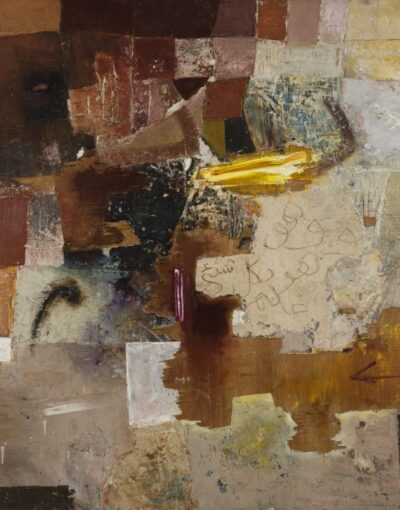
Shaker Hassan Al-Said, `` Letters & Colours`` 1991. Oil on wood. Jordanian National Gallery for Fine. Arts.
4. Influencers
Three prominent artists, founders of the visual art movement, who transformed Iraqi visual arts from being classical and traditional into contemporary art.
A brief biography of three prominent artists who were very influential as well as founders of the visual art movement:
Faiq Hassan
(1914-1992), Baghdad.
In addition to being one of the founders of modern art in Iraq, artist Faiq Hassan also contributed to the establishment of the painting department at the Institute of Fine Arts in Baghdad in 1938. Many art students who later became distinguished painters, graduated under his guidance. He is one of the most prominent founders of modern visual art in Iraq.
According to an art critique, Shawkat Al-Rubaie’s book “Contemporary Art in the Arab World,” Faiq Hassan is undoubtedly considered one of the most prominent users of colours. He understood the spirit of the society he lived in, reflecting it during the period he witnessed. Thus, his realism was not mere documentation but a depth of realism delving into the essence of prevailing social relationships, making his paintings vibrant with life.”
This experimental and enduring style, which he developed over a considerable period of his artistic life, was inherited by generations of Iraqi artists who studied under him. While Faiq Hassan established a distinct and exceptional school with this style, he also nurtured a generation of imitators who could not break free from the influence of his approach.
During the period after World War II and the beginning of the 1950s, most artists’ gatherings took place at Faiq Hassan’s house (at the front room that he used as an art studio) where discussions, debates, and arguments about art theories and practices took place.
Architect Rifat Chadirji (1926-2020) wrote in his book “Al-Akhidar and the Crystal Palace”: ‘The discussions in the pioneers’ gatherings evolved and crystallized into the necessity of creating a modern Iraqi art influenced by Iraqi society, with a contemporary and advanced foundation. Simultaneously, it should have a distinct Iraqi touch. While we were engaged in these heated debates, Faiq Hassan produced his painting of an Arab girl with a goat. This was in early 1953, and this painting holds great significance for me. It was the first painting that used advanced professional techniques and simultaneously represented a local subject with an Iraqi touch and spirit.’
In February 1947, Faiq Hassan established the “Society of the Primitives.” When they held their first exhibition in December 1950, they wanted to give it an Arabic name, and it became known as “Al-Rawad”.
Some of its prominent members were Faiq Hassan, Khaled Al-Qassab (1924-2004), Zaid Saleh (1922-1986), Yousif Abdulkadir, Ismail Al-Sheikhly (1924-2002), Farouk Abdelaziz, Nouri Mustafa Bahjat (1921-2018), Issa Hanna (1919-2009), Abdullah Al-Umari (1921-1999), and Jawad Salim (1916-1961).

Faiq Hassan (1914-1992).
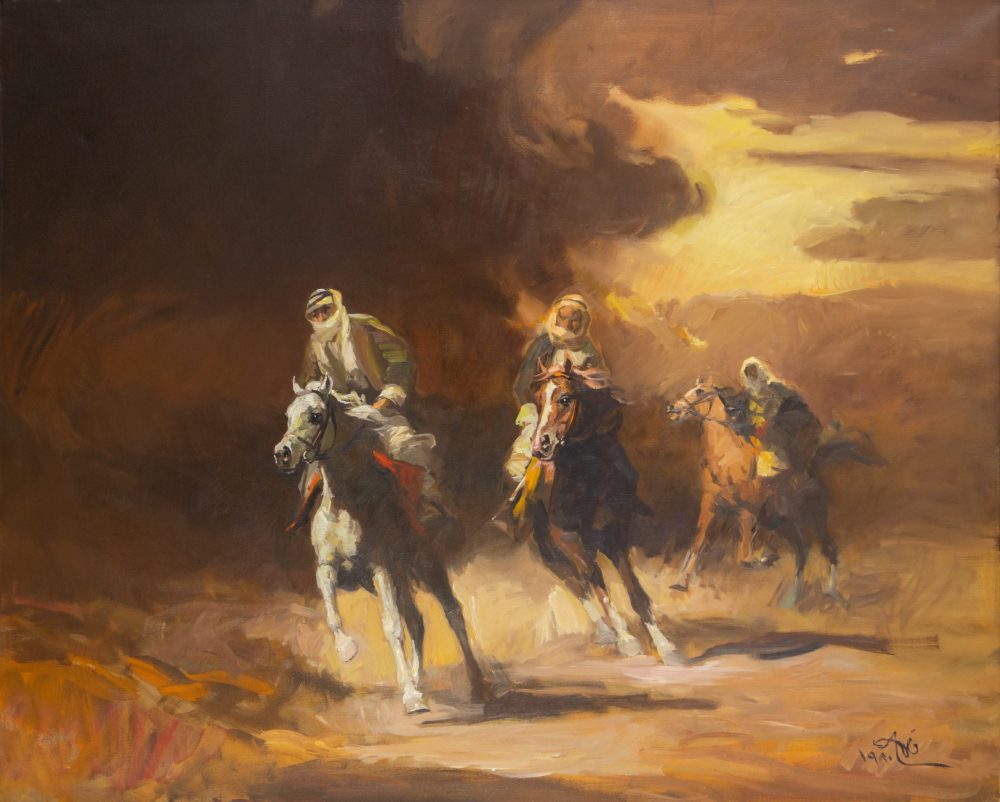
Faiq Hassan, ``The Storm`` 1980. Oil on canvas. Jordanian National Gallery of Fine Art.

Faig Hassan, ``Untitled`` 1947. Water colour on A3 paper. Private Collection - London.
Faiq used to lead Al-Rawad group every Friday morning to the fields along the banks of the Tigris and Euphrates rivers, and sometimes outside Baghdad, to paint nature. Khalid Al-Qasab mentioned in his book “Artistic Memories”: ‘We had to comprehend nature during winter with its bare trees, summer with its intense brightness and dense shadows, and autumn with its falling yellow leaves. This journey did not cease even with heavy rainfall or dust storms. We all followed Faiq’s rapid brushstrokes.’
“He understood the spirit of the society he lived in, reflecting it during the period he witnessed. Thus, his realism was not mere documentation but a depth of realism delving into the essence of prevailing social relationships, making his paintings vibrant with life.” from Shawkat Al-Rubaie’s book “Contemporary Art in the Arab World,”
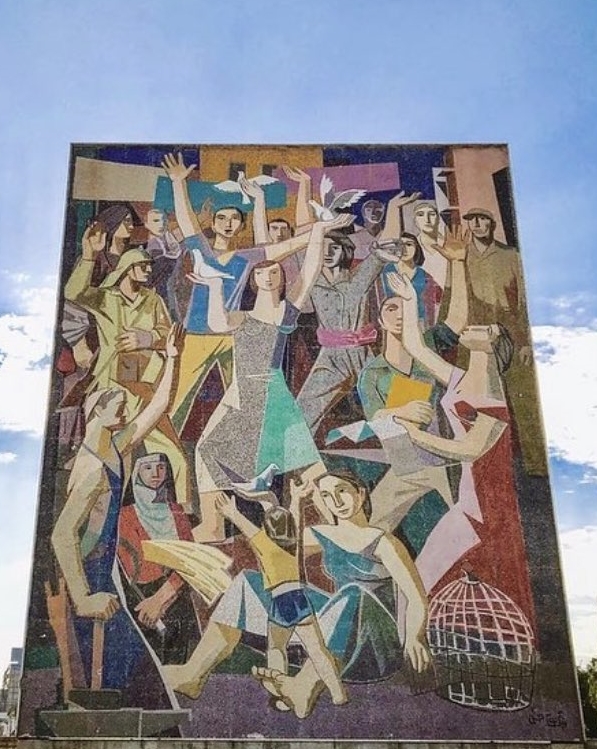
Faiq Hassan, ``Women and Birds``, Mosaic Mural at Tayaran Square, Baghdad.
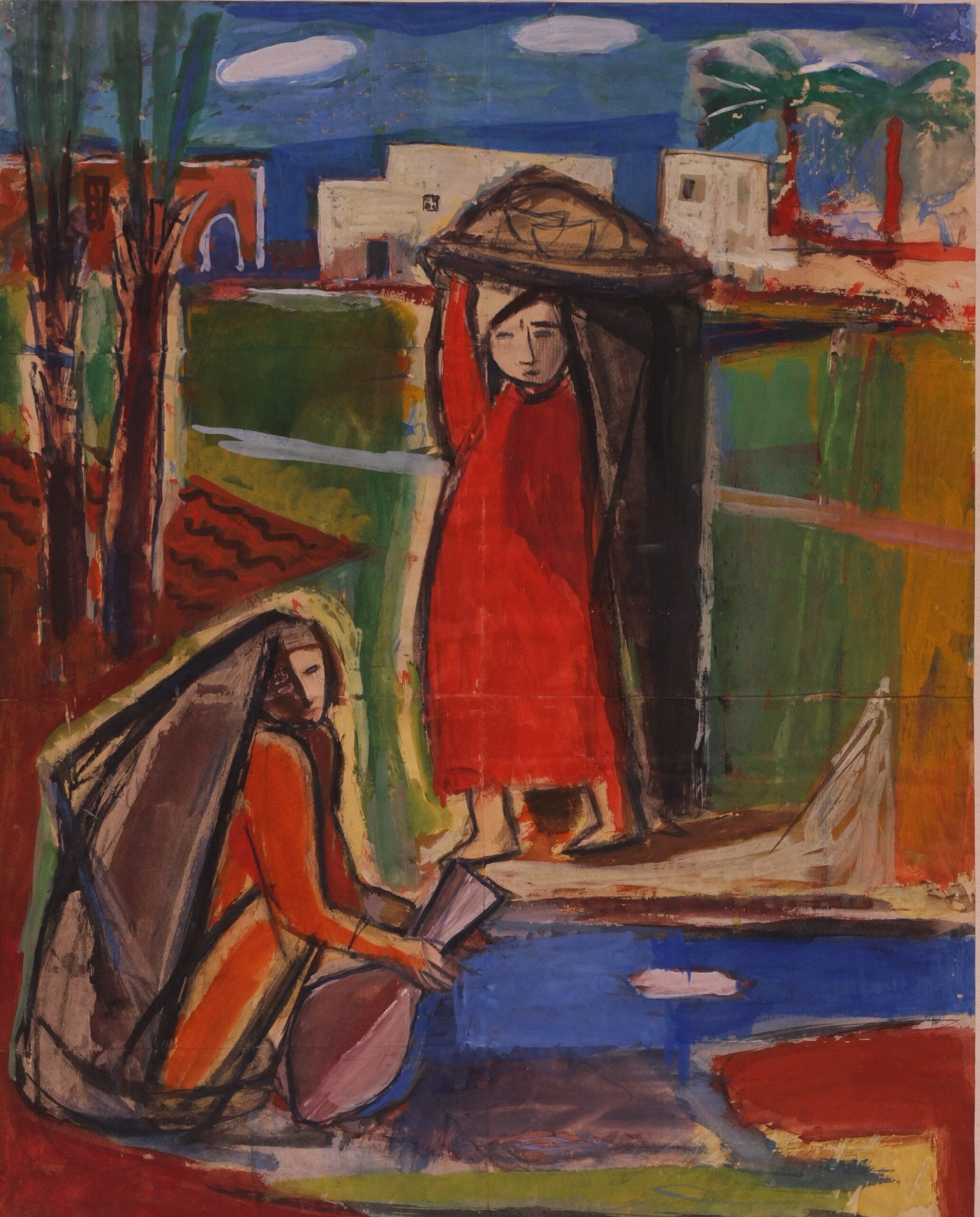
Faiq Hassan, ``The Village`` 1954. Water colour. Private Collection - London.
Jawad Salim:
(1916 Ankra, Turkey -1961 Baghdad, Iraq)
Jawad grew up in a family immersed in an artistic atmosphere, as all family members were artists. His father, Hajj Mohammed Salim (1883-1941), and his brothers Rashad, Suad (1918-2002), and Nizar (also known as Nuzad) (1925-1982) and his sister Naziha (1922-2008) were all artists.
“Jawad was the lighthouse that illuminated the path for the artists who came after him. He was known for his liberating spirit, not believing in the constraints imposed by traditional society. He was also a distinguished encyclopedic intellectual among artists, well-versed in literature, theatre, music, and dance. Jawad was influenced by Sumerian and Babylonian arts, as well as Assyrian murals. He was also influenced by Picasso’s style, which is evident in his paintings and sculptures. He studied Arabic calligraphy and the drawings of Yahya Al-Wasiti, Turkish and Iranian miniature painting, and fused all these treasures into his paintings and sculptures with a new cohesive style. Jawad incorporated Western influences he acquired during his studies in Italy and England, combining them with strong lines and colours dominated by the Baghdad environment. During that period, he started emphasizing Iraqi uniqueness in his drawings through abstraction” (excerpt from the book “This Is How the Days Passed” by Balkis Sharara, p. 158).
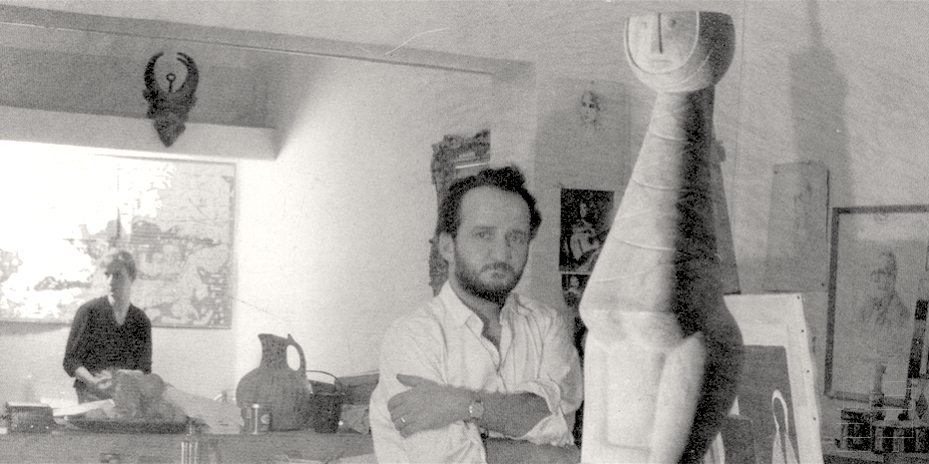
Jawad Salim and his wife artist Lorna Salim (1928-2021).
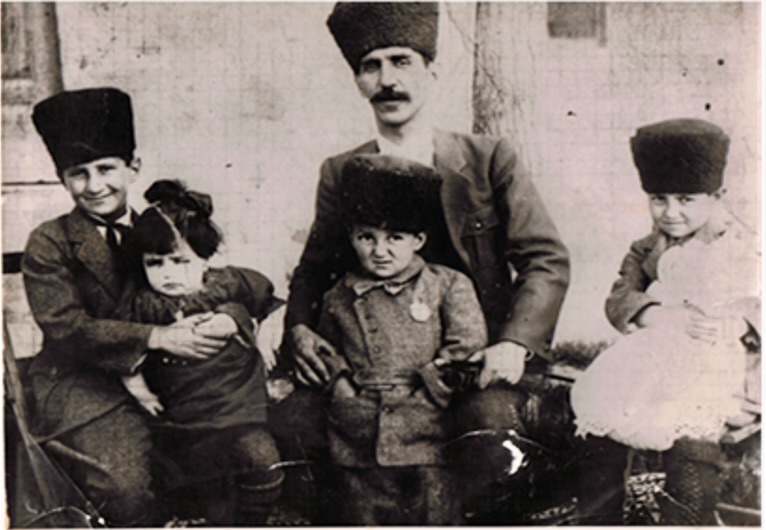
Jawad Salim Family, father Mohammad - Rashad, Naziha, Jawad, Suad, Nuzad (Nazar).

Jawad Salim, ``Freedom Monument`` Baghdad, 1959-1961. Architect Rifat Chadirji.
Painter Issa Hanna (1919-2009), who accompanied Jawad since their early years, wrote, “He excelled in his ability to perform quickly, and his strong memory enabled him to draw details from memory, especially in drawing faces.”
In 1950, Jawad Salim decided to separate himself from the “Pioneers” group and establish a new group called the “Baghdad Group for Modern Art,” which was characterized by an intellectual and aesthetic direction that united its members. This contrasted with the “Pioneers” group, where close friendships and a love for art were the main factors that brought them together.
The Baghdad Group for Modern Art consisted of 18 painters and sculptors, namely: Jawad Salim (1916-1961), Boghos Bablanian (1927-2021), Jabra Ibrahim Jabra (1920-1994), Khalid Al-Rahal (1926-1987), Khalil Al-Ward (1923-1984), Rasul Alwan (1928-1996), Shaker Hassan (1925-2004), Tariq Mathloum (1933) Abdul Rahman Al-Gailani, Ali Al-Shaalan, Fadel Abbas, Faraj Abbo (1921-1984), Qahtan Awni, Lorna Salim (1928-2021), Mohamed Al-Husseini, Mohamed Ghani Hakim (1929-2011), Miran Al-Saadi (1934-1987), Nizar Salim (1925-1982), and Naziha Salim (1927-2008).
Some of the important works created by artist Jawad Salim include “July 14 Monument,” “Political Prisoner,” “Boys Eating Watermelon,” “Henna Night,” “The Nap,” and “The Republic Emblem.”
“This experimental and enduring style, which he developed over a considerable period of his artistic life, was inherited by generations of Iraqi artists who studied under him.”
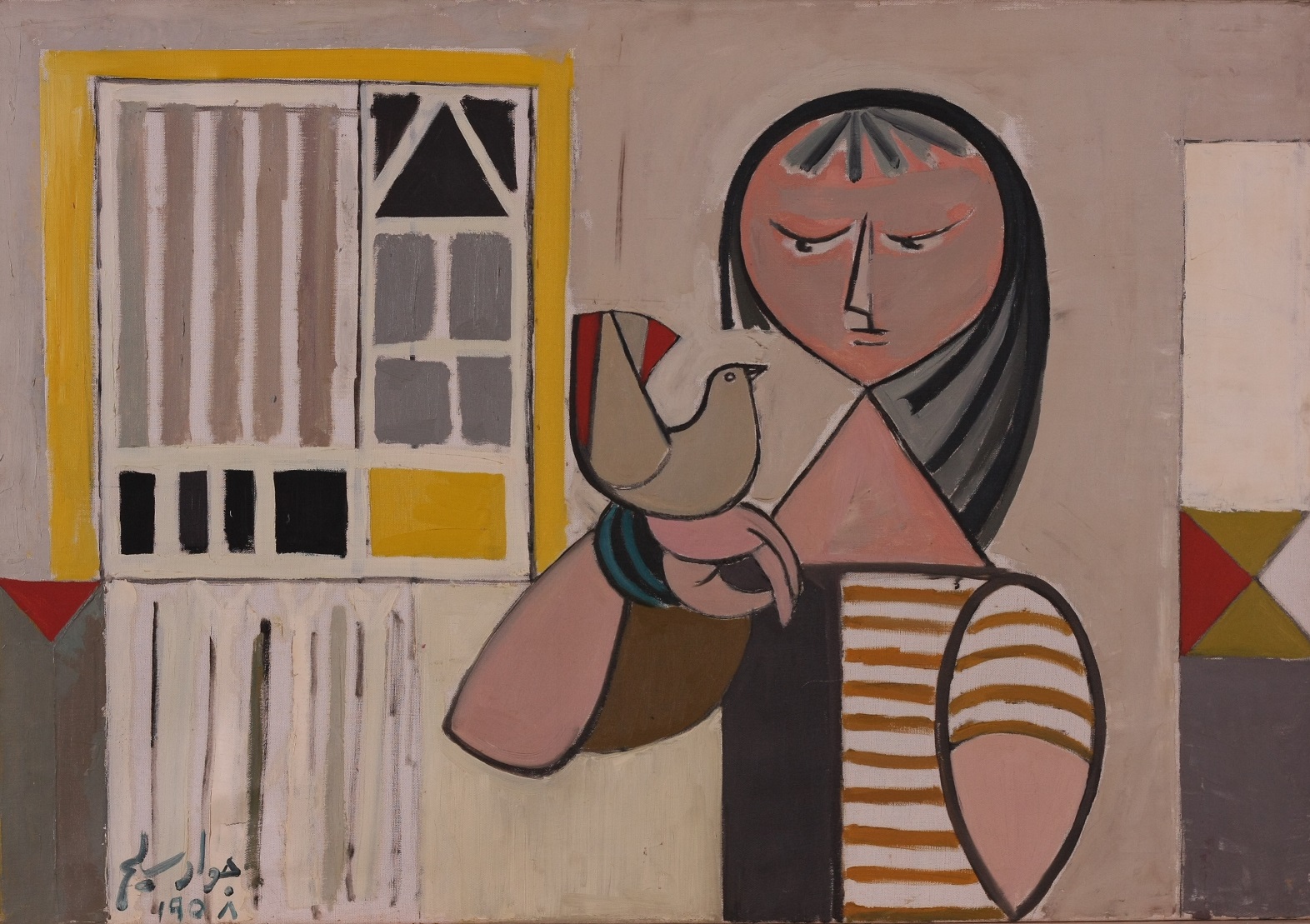
Jawad Salim, ``The Girl and The Bird``, 1958 , oil. Private Collection - London
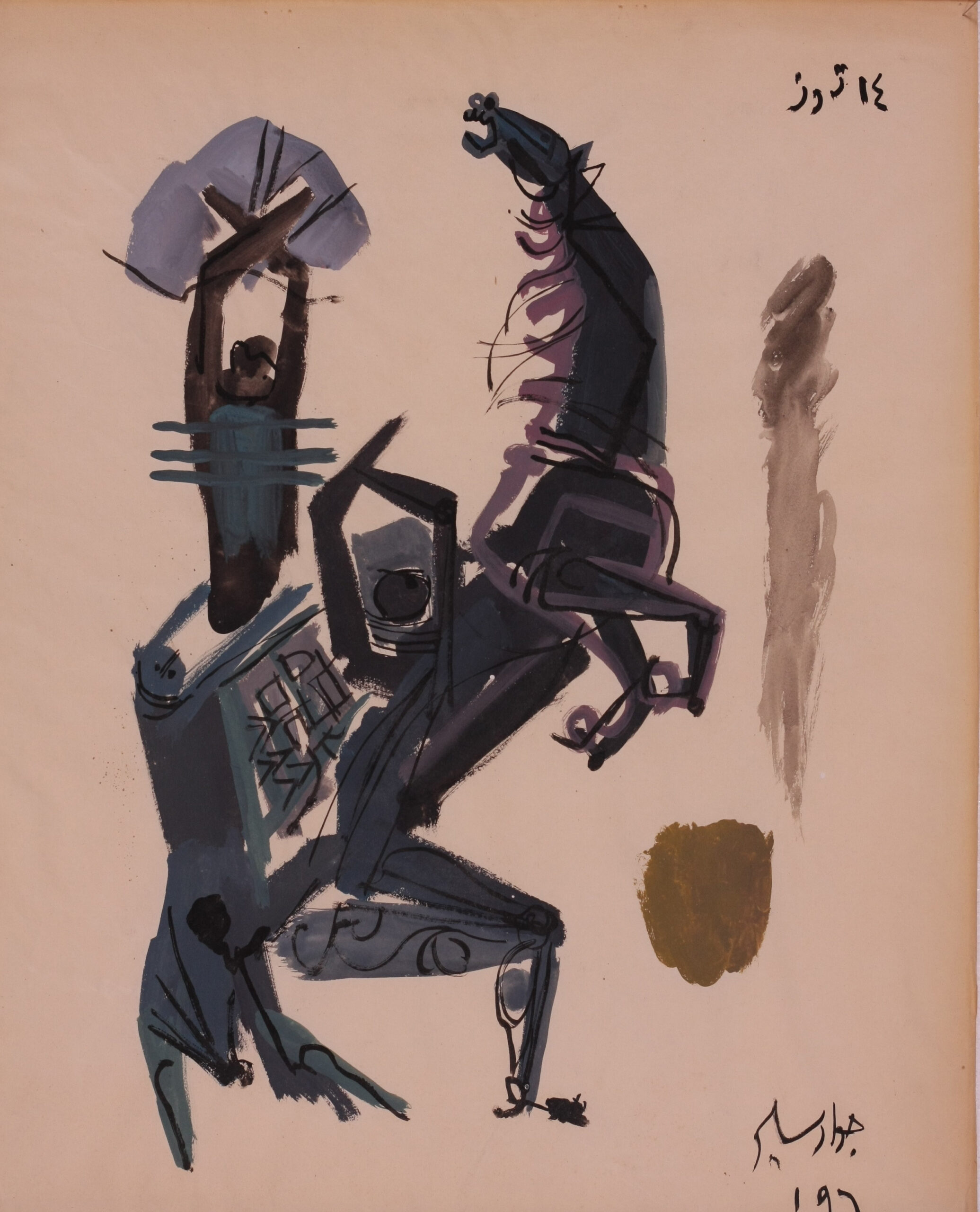
Jawad Salim, ``The Blue Horse`` 1960. Water colour. Private Collection - London.
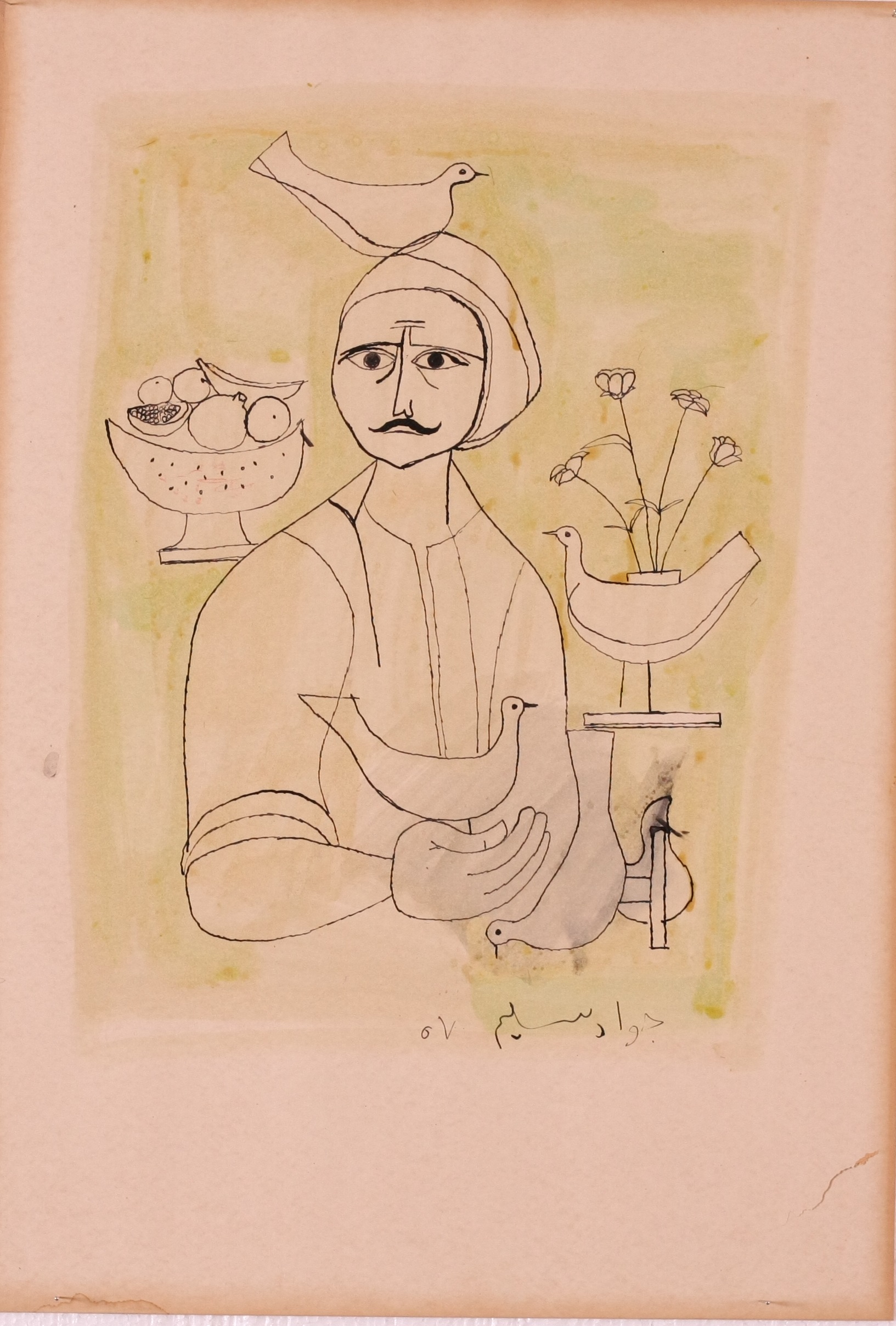
Jawad Salim. `` Al-Mutayirchi `` (Bird trainer) 1957. Water colour. Private Collection - London.
Mahmoud Sabri:
(1927 Baghdad, Iraq – 2014 UK).
In his early beginnings, artist Mahmoud Sabri was a talented amateur artist. He joined the “Pioneers” group in August 1949. Initially, his works were considered as those of a beginner, but he continued to pursue painting without interruption, despite working as a bank employee. Over time, his skills and techniques developed.
Mahmoud Sabri’s goal on the political level was to direct art towards contributing to the progressive movement. His work and political stance began to influence art and some other artists. Rifat Chadirji mentioned in his book ” Al-Ekhaider and the Crystal Palace ” the following: “Mahmoud Sabri took the lead among the artists, knowingly or unknowingly, in choosing subjects towards a new channel of art that reflects a certain realistic social life, with a specific colouration concept that is the colouration of the ‘workers and peasants’ revolution as he envisions it. Other artists, consciously or unconsciously, followed suit, working within a realistic art with a particular tone. Mahmoud Sabri was the first to awake Iraqi artists from its slumber in rural romanticism.”
The English critic Alan Neame said, “He is the only successful philosopher among artists.”
In the early 1970s, he introduced a new field in visual art called “The Theory of Quantum,” which involved depicting the invisible nature using the colour of each substance.
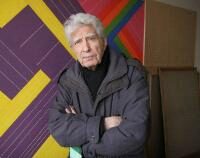
Mahmoud Sabri (1927-2014).

Mahmoud Sabri ``untitled``, 1960s. Acrilic on canvas. Private Collection - Toronto.

Mahmoud Sabri. ``Water``, 1970. Oil on canvas. Barjeel Art Foundation

Mahmoud Sabri ``Parsnip Seller 1950, Oil on canvas. Barjeel Art Foundation.
5. Contributors,
Three artists contributed to the movement and played an active role in promoting Iraqi visual art and extending it to a wider audience.
Akram Shukri:
(1910-1982 Iraq)
First Iraqi artist to receive an art scholarship to study in England and was also the first Iraqi artist to paint using the Pointillism style.
He was instrumental in founding the Society of Friends of Art, established in 1941 and continued until 1948. Its members, in addition to artists, came from various professions (such as agriculturist Darwish Al-Haidari and radio director Karim Majid). The society organized three exhibitions which will be mentioned later in this article.

Akram Shukri (1910-1982), studied in England UK.
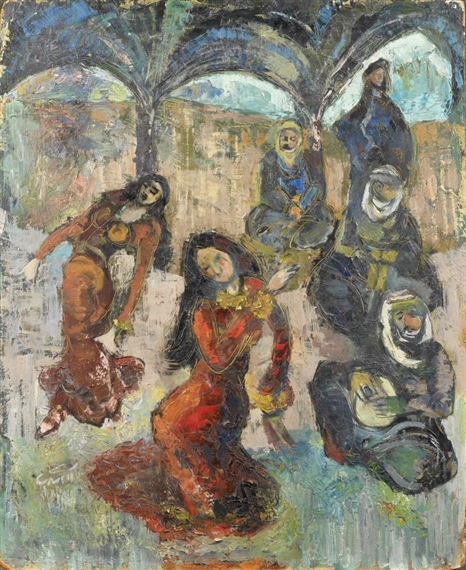
Akram Shukri, ``untitled, 1950s. Oil on board. Bonham 2015.
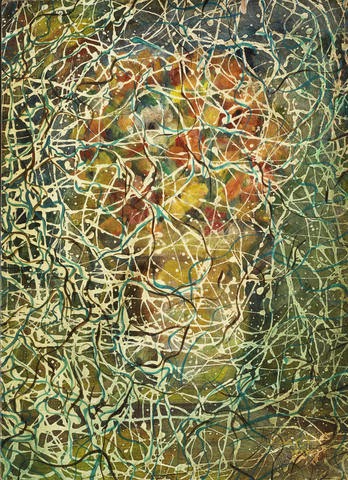
Akram Shkri, `` Abstract Composition``,1962. Oil on wood. Bonhams 2015.
Jamil Hamoudi:
(1924-2003)
Certain art historians regard him as the “founding father” of the Hurufiyya movement (alphabetical art movement or Letrism movement). However, other scholars have suggested that the movement began somewhat earlier with the work of the Iraqi-American artist, Madiha Omar (1908-2005) who exhibited Hurufiyya artwork in 1949 in Washington.
Jamil Hamoudi became a founding member of the One Dimension Group, which was started by his friend and colleague, artist and intellectual, Shakir Hassan Al-Said (1925-2004). He was active in organizing exhibitions for up-coming artists, at a time when Iraq had no public galleries. In 1973 he was appointed as Director of Fine Arts at the Ministry of Culture.

Jamil Hamoudi (1924-2003). studied art between Baghdad and Paris.
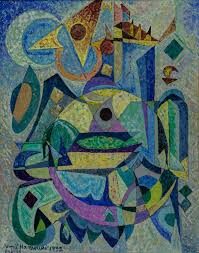
Jamil Hamoudi, ``Huruffiyya Painting``,1980. Oil / paper. Jordanian National Gallery of Fine Arts.
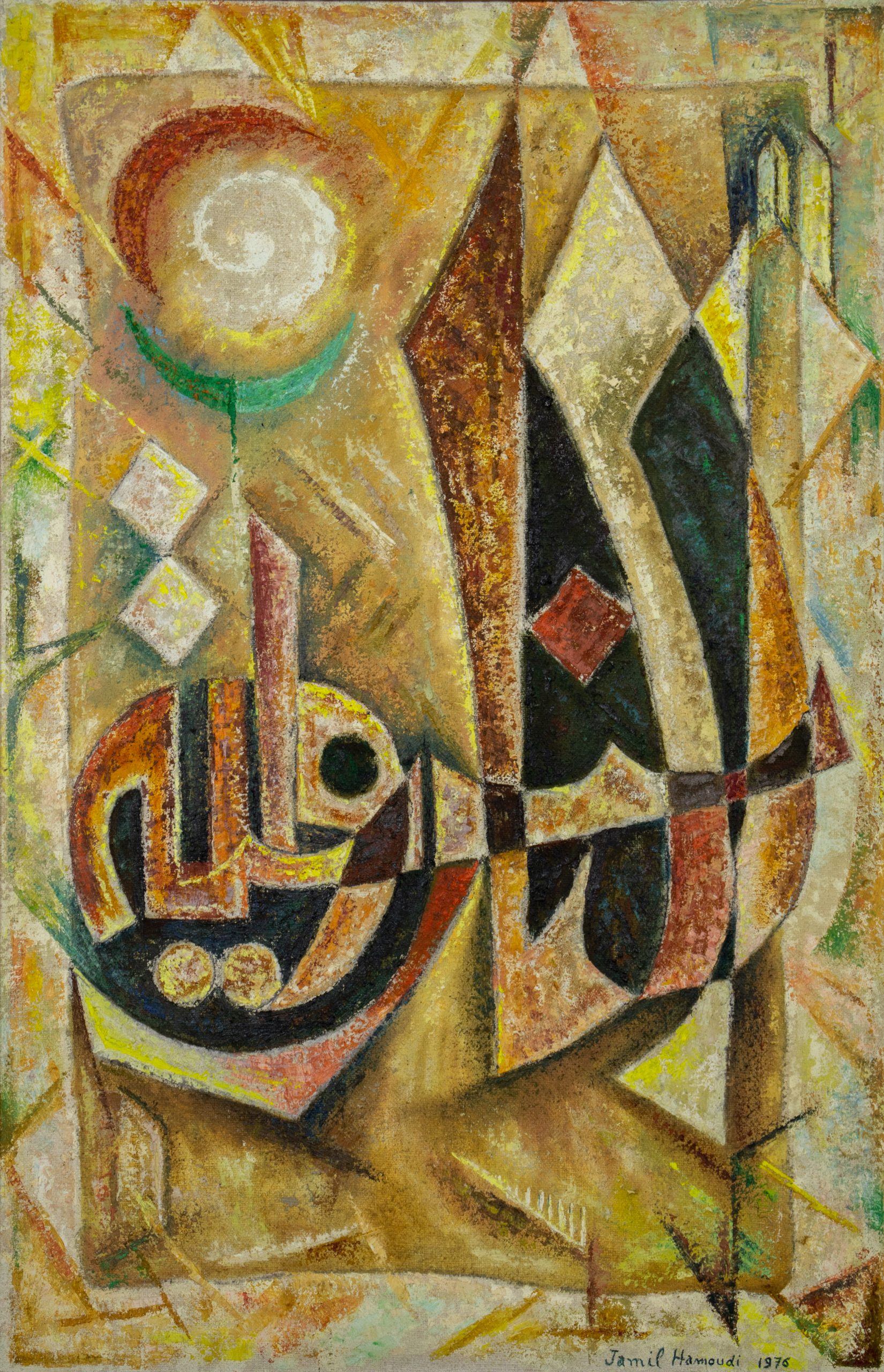
Jamil Hamoudi, ``People are Equal `` 1976, Oil on canvas. Jordanian National Gallery of Fine.Arts.
Khalid Al-Jadir:
(1924 – 1988)
He was among the early graduates of the Institute of Fine Arts in 1945. He studied at the College of Law and art at the Institute of Fine Art concurrently, graduating in 1946 with degrees in both art and law.
Studied at the École Nationale Supérieure des Beaux-Arts in 1954 and earned a Ph.D. in the History of Islamic Art from the Sorbonne. While in Paris, he developed a lifelong passion for the Impressionists and joined the Salon de Paris.
On returning to Baghdad, he accepted the position of Dean of the Institute of Fine Arts; a position he held for several years. In 1962, he founded the Academy of Fine Arts, and later became its Dean. As an administrator, he was “meticulous.” Through these administrative activities, Al Jadir advanced the professionalization of art education in Iraq.
He played a fundamental role in the establishment of the Society of Fine Artists Society in 1955.
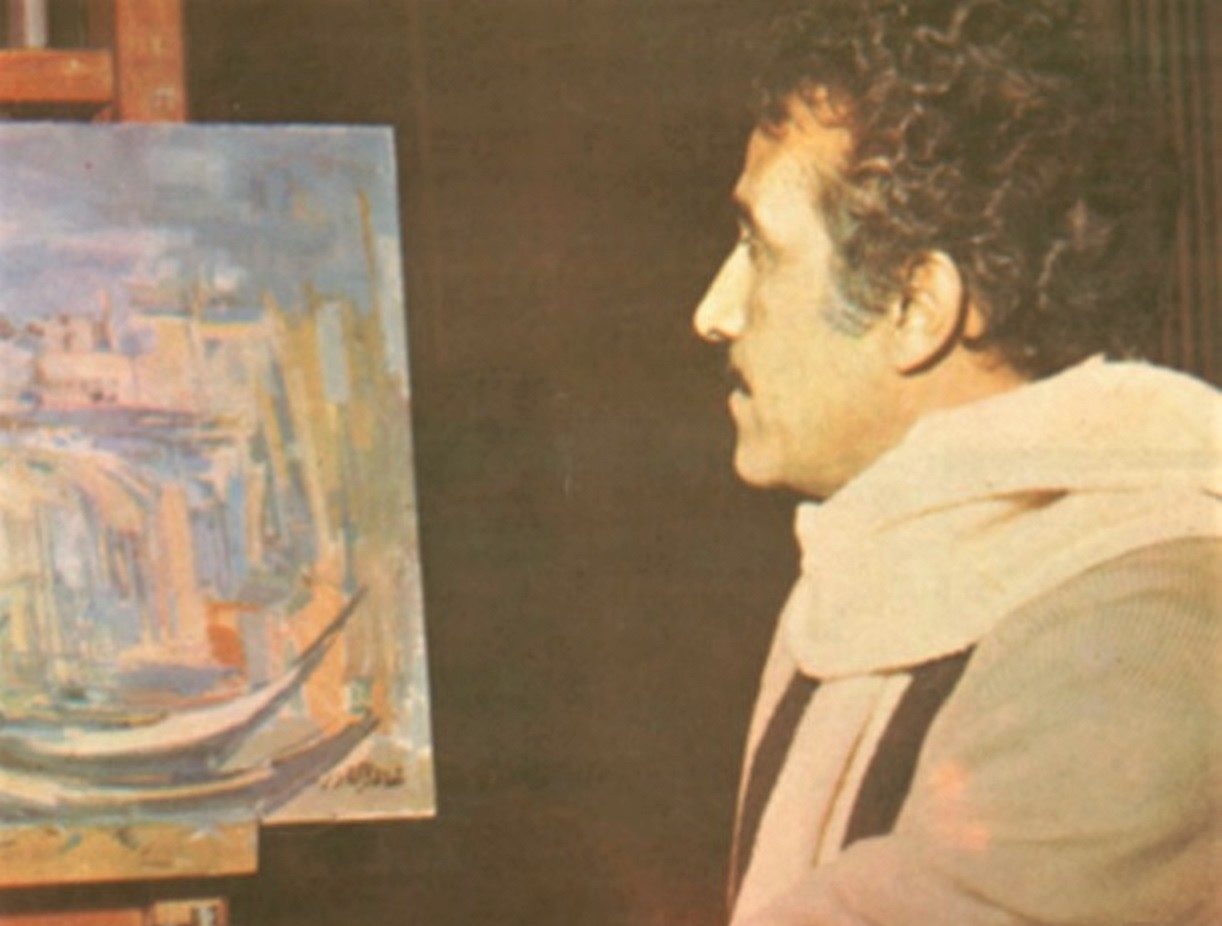
Khalid Al-Jadir, (1924-1988).
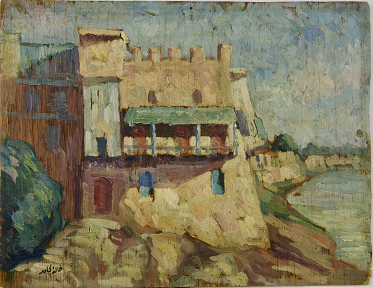
Khalid Al-Jadir, ``Samll River Shore`` signed undated, Oil on board. Private Collection Ali Al-Jadir

Khalid Al Jadir, ``untitled`` , signed undated. Oil on canvas. Private Collection - Ali Al-Jadir
6. The Polish
This section considers the history of a vital role that Polish artists had with Iraqi artists.
During World War II, specifically in 1941, Allied forces passed through Baghdad on their way to the Battle of El Alamein, and among these forces was the Polish brigade. This brigade included prominent artists, namely Matushak, Yarima, Jabovski, and the brothers Haru and Nopolski. During their stay in Baghdad, they became acquainted with Iraqi artists, and it did not take them long to gain deep friendship with Iraqi artists, especially with Faiq Hassan, Jawad Salim, Ata Sabri, and others. Jabra Ibrahim Jabra wrote, “The 1940s were a period of discovery, astonishment, and anticipation. It began with some Polish artists coming to Baghdad due to the war, and they met Jawad Salim, Faiq Hassan, Ata Sabri, and others. The first thing the Poles did was to draw the attention of these young painters to the value and immense potential of colour. For the young artists in Baghdad, this was a revelation of a new world.” Khalid Al-Qasab mentions their clear influence on Faiq Hassan in the use of light and his introduction to the Impressionist movement through the Polish artist Matushak. Faiq would ask Matushak to paint in front of his students outside the classroom to teach them how to use light. Jawad Salim recalls in his memoirs in 1943 the influence of Matushak on his understanding of art and the use of colour. He expresses his gratitude for discovering this new knowledge and describes how it illuminated his path, opening his eyes and his heart, becoming an enlightening guide for him. The Polish artists held personal exhibitions that had a significant impact on Iraqi artists during that period. Not only that, but the meetings and discussions that took place between them in the artists’ homes or at the Brazilian Café on Rashid Street contributed to stimulating and encouraging the artistic movement in Iraq.
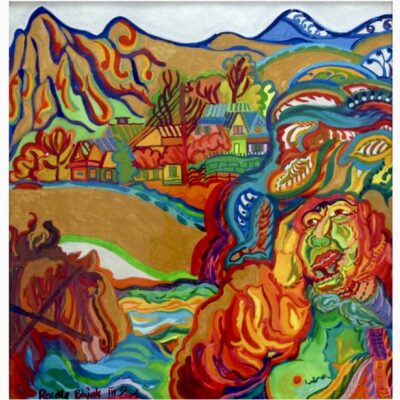
Joszef Jarema
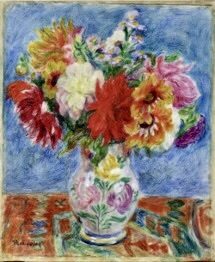
Joszef Jarema

Edward Matuszczak
7. Directorate of Antiquities:
The Directorate played an important role. In 1943, it established the “Hall of Paintings” (equivalent to the Museum of Fine Arts) and published a guidebook in Arabic and in English, which included the contents of the hall: 65 paintings by Iraqi and resident foreign artists. In the introduction of the guidebook, Youssef Ghanimah (who was the director at the time) mentioned that the Directorate of Antiquities purchased the paintings from seasonal and periodic exhibitions organized by Iraqi painters and foreign artists to form the nucleus of an Iraqi national hall. This was later realized with the establishment of the National Museum of Modern Art (1963).
“Youssef Ghanimah (who was the director at the time) mentioned that the Directorate of Antiquities purchased the paintings from seasonal and periodic exhibitions organized by Iraqi painters and foreign artists to form the nucleus of an Iraqi national hall. This was later realized with the establishment of the National Museum of Modern Art (1963).”
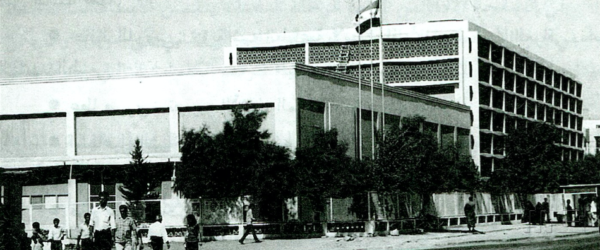
National Museum of Art (Gulbenkian Gallery), Baghdad, 1963.
Furthermore, many graduates of the Institute of Fine Arts were appointed for the purpose of sculpting and painting important artifacts and exhibiting them in the museum instead of the preserved originals. One of the early artists was Jawad Salim, who worked in this directorate in the 1930s. He was also assigned in 1952 to create an Assyrian chariot that was displayed in the coronation procession of King Faisal II. The sculptor Abdul Rahman Al-Gailani was commissioned to create a replica of the lyre of Ur, which became an icon of Iraq. As for the artist Khalid Al-Rahal, he carved the head of Shubad, the Sumerian queen. Dia Al-Azzawi, a graduate of the College of Arts, Department of Archaeology, was appointed as an artist in the museum’s laboratory, rather than as an archaeology graduate.

Dia Al-Azzawi, ``Mission of Distruction `` 2004-2007.
8. Friends of the Artists
It is noticed that the friends of the artists were from the educated, well informed middle class, who had greatly contributed to enlightening the artists and exposing them to other artistic fields beyond visual arts, such as theatre, modern poetry, architecture, music, and other arts. This happened during their meetings and discussions. Here are some close friends of the artists who had always been in their company, contributing to the formation and development of the modern art movement:
One can say it is comparable to the ancient Greek symposium, especially the Plato symposium, where men gather after dinner for dialogue. It is thought that was where Greek philosophy was born.
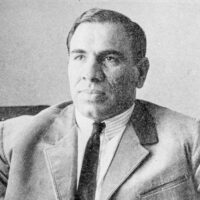
Qahtan Awni, Architect
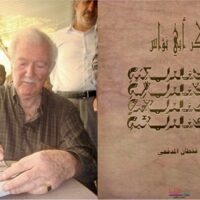
Qahtan Al-Madfai, Architect
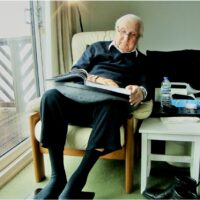
Rifat Chadirji, Architect and Writer

Jabra Ibrahim Jabra, Writer
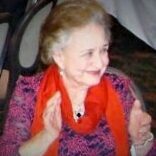
Laman Al-Bakri, Exhibiions Director
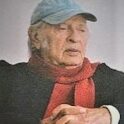
Nazim Ramzi, Phtography, Printing.
- Rifat Chadirji (1926-2020): An architect and Author with extensive writings on architecture and philosophy. Some of his architectural works include the Union of Industries Building, the Central Post Office on Rashid Street, the old Unknown Soldier Monument in Al-Firdous Square, and the design of the Freedom Monument Wall for Jawad Saleem.
- Qahtan Awni (1926-1972): An exceptional architect and painter, and a member of the Baghdad Group led by Jawad Saleem. Some of his architectural works include the design of Al-Mustansiriyah University in 1966 and the Awqaf Building in the Shorja district.
- Qahtan Al-Madfai (1927-2021) An architect, and among his important architectural works are the headquarters of the Artists Association in Al-Mansour, Bunnia Mosque, and the Ministry of Finance located in Al-Waziriya on the express Highway. He is also a painter and a member of the Pioneers Society and one of the founders of the Iraqi Artists Association. He created many drawings and paintings and has a passion for poetry and music. The author of two collections of free verse poetry.
- Jabra Ibrahim Jabra (1920-1994): Novel Writer and art critic and translator. A consultant to the Ministry of Culture and Information. He has written numerous novels. A professor of English literature at the University of Baghdad. An editor in chief of the Ahl Al-Nafit magazine, through which he introduced Iraqi artists to Iraqi and Arab societies. He also has some artistic works and participated in exhibitions of the Baghdad Group for Modern Art and the Association of Artists.
- Nazim Ramzi (1928-2013) One of the founders of photography and printing art in Iraq, and the author of two photographic art catalogues.
- Laman Al-Bakri (1928): The director of exhibitions in the Ministry of Culture and Information, she was responsible for the foundation of the Music and Ballet School and the Symphony Orchestra.
- Baher Faiq ( 1903-2001): A veteran diplomat and well-known politician who studied history and philosophy at Sorbonne in 1922. He hosted an exhibition at his home for visual artists.
- Sabih Mahmoud Shukri: An employee at Rafidain Bank who travelled extensively to Europe and followed the art movements. He possessed an important collection of artists’ works and participated in the discussions that took place among artists.
- Yousef Abdul Qadir: A writer, journalist, translator, and caricaturist.
- Abdullah Al-Omari (1921-1999) A prominent military engineer who, according to Khaled Al-Qasab (1924-2004), was a cultured person who loved art and was enthusiastic about meeting with artists.
9. Social Interaction:
Soon after the Second World War, a bourgeois class began to emerge with the rise of private industries and the formation of opposition parties. It was an enlightened class that appreciated this modern type of art, so they started visiting exhibitions, collecting, and displaying artworks in their homes and offices. As a result, there was an acceptance within the society for this new phenomenon, which was a non-traditional custom.
Thus, this modern and enlightened bourgeois class played an effective role in encouraging and motivating this elite group of artists in their non-traditional artistic journey, especially in a conservative and traditional society. In 1950, the Baghdad Group (Al-Rawad) held its first exhibition at the residence of Khalid Al-Qasab’s father, overlooking the Tigris River in Karradat Mariam. In his book “Artistic Memories” on page 75, Dr. Khalid Al-Qasab, who belonged to this group, narrates about this exhibition: “The culture of my father was Ottoman, and it imposed a conservative behavior on us, where art had no place in a house devoid of drawing paper, paintings or even a box of drawing pencils., the exception was Turkish Worship songs. Despite that, he agreed to hold the exhibition in his house.” The significance of the first exhibition of the Baghdad Group at Khalid Al-Qasab’s father’s residence lies in the fact that it was open to the public, with an attendance of more than five hundred, including diplomats and critics. One hundred and fifty paintings were displayed. Among the participants in the exhibition were Faiq Hassan, Jawad Saleem, Khalid Al-Qasab, and Mahmoud Sabri. This exhibition had a significant impact on the Baghdad Group, as some of its members turned from art enthusiasts into professionals (source: Jabra Ibrahim Jabra).
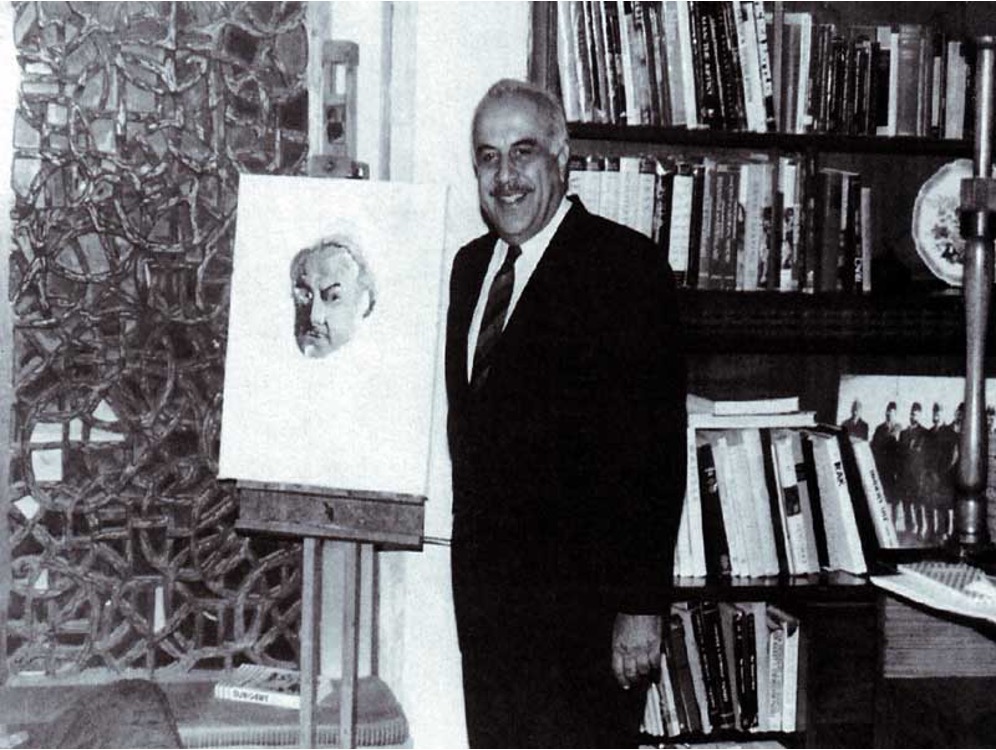
Dr. Khalid Al-Qasab (1914-2004).

Dr. Khalid Al-Qasab,
10. Art Exhibitions:
10.1 International Trade for Industry and Agricultural Fair 1933:
Held in Baghdad in 1933 under the patronage of King Faisal I (in a building near Bab Al-Muadham, later occupied by the Ministry of Foreign Affairs). In this exhibition some art works were displayed for the first time in public.
The participating artists included Abdul Qadir Al-Rassam, Al-Hajj Muhammad Salim ( Father of Jawad Salim), Nasser Aouni, Suad Salim, the sculptor Fathi Safwat and Jawad Salim who at the time was still a student in the intermediate stage.
Artist Fathi Safwat won the first prize for his statue of King Faisal I, while artist Jawad Salim won the second prize.

International Trade for Industry and Agricultural Building in Adhamia District, Baghdad.
10.2 Medical College Exhibition for Amateurs, 1940.
Some medical students who were amateur artists held an art exhibition inside the College. Among whom were Khalid Qasab (1924-2004) and Mustafa Nouri Bahjat (1924-2018) who later became members of “Baghdad Group” founded by Jawad Salim.
10.3 Friends of Artists Society’s Exhibitions, 1941, 1943 and 1946.
A short-lived society, initiated by Akram Shukri ,” Friends of Art Society”. it was established in 1941 and continued until 1948. Akram Shukri was elected as its first president and Nahida Al Haidary as the secretary of the society. The society acclaimed to include non artist members of different professions. Its members, in addition to artists, came from various professions such as agriculturist Darwish Al-Haidari and the Iraqi radio station director Karim Majid. The society organized three exhibitions.
10.4 Private Exhibition for Jawad Salim
The exhibition was at Jawad friend’s house, Nazar Ali Jawdat (1920-2016). It was the first private exhibition to be held in Baghdad with limited visitors. However, it was the push factor for the Rawad society to have their exhibition.
10.5 The Baghdad Group (Al-Rawad) 1950.
The group held its first exhibition at the residence of Khalid Al-Qasab’s father, more details can be found in Social Interacion, factor # 9.
10.6 Mansour Exhibition of Painting and Sculpture 1956.
The exhibition was inaugurated by King Faisal II in February 1956. The participating artists in the exhibition were Faiq Hassan, Jawad Saleem, Ismail Al-Sheikhly, Mahmoud Sabri, Akram Shukri, Hafidh Al-Droubi, Khalid Al-Qasab, Lorna Saleem, Faraj Abbo Al-Numan, Naziha Saleem, Boghos Bablanian (a graduate of the Institute of Fine Arts, 4th year), Khalil Al-Ward, and Suad Al-Attar (1942), a young female artist in her intermediate school stage at the time.
King Faisal II himself participated with a portrait of Amir Rabia. The success of this exhibition served as an impetus for the establishment of the “Association of Visual Artists” in 1956.
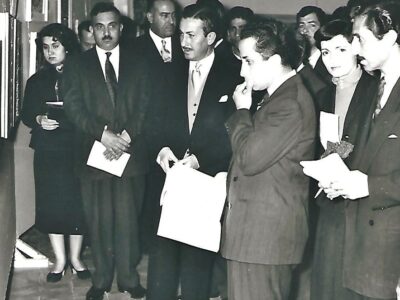
King Faisal II at Mansour Exhibition 1956.
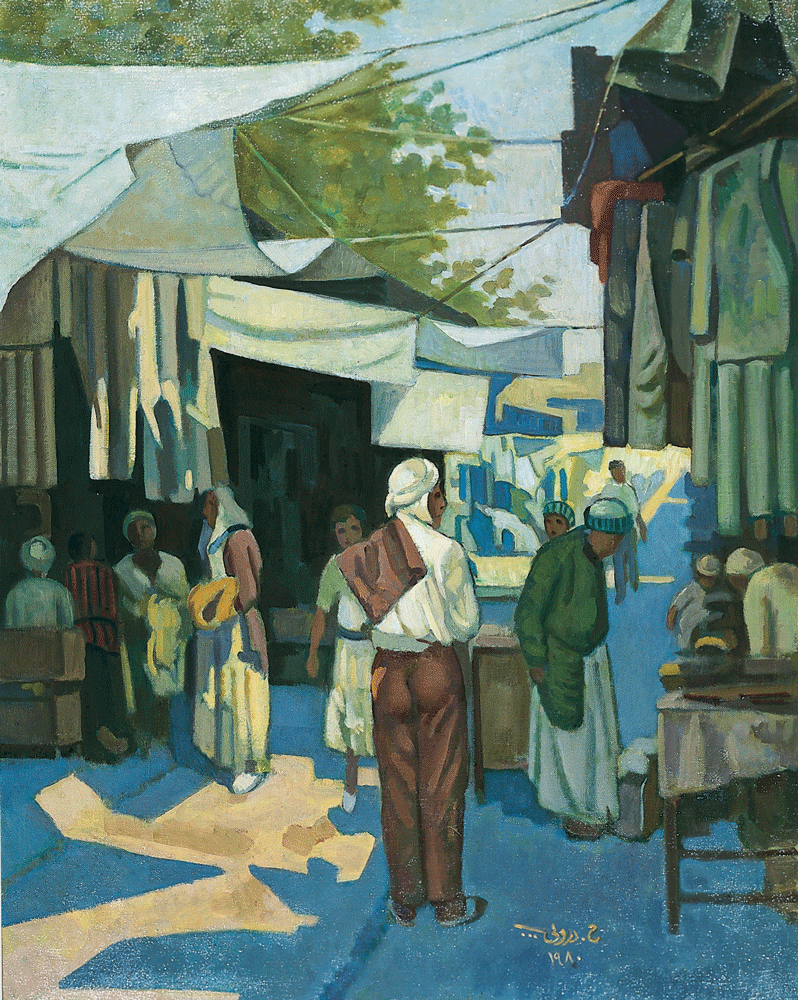
Hafith Al-Dourobi, `` The Market place``, 1980 .Oil on canvas. Jordanian National Gallery for Fine Arts.

Suad Al-Attar,`` Vissions from Graden of Edan I``. 2011. Oil on canvas. Iamge source : Artist website.
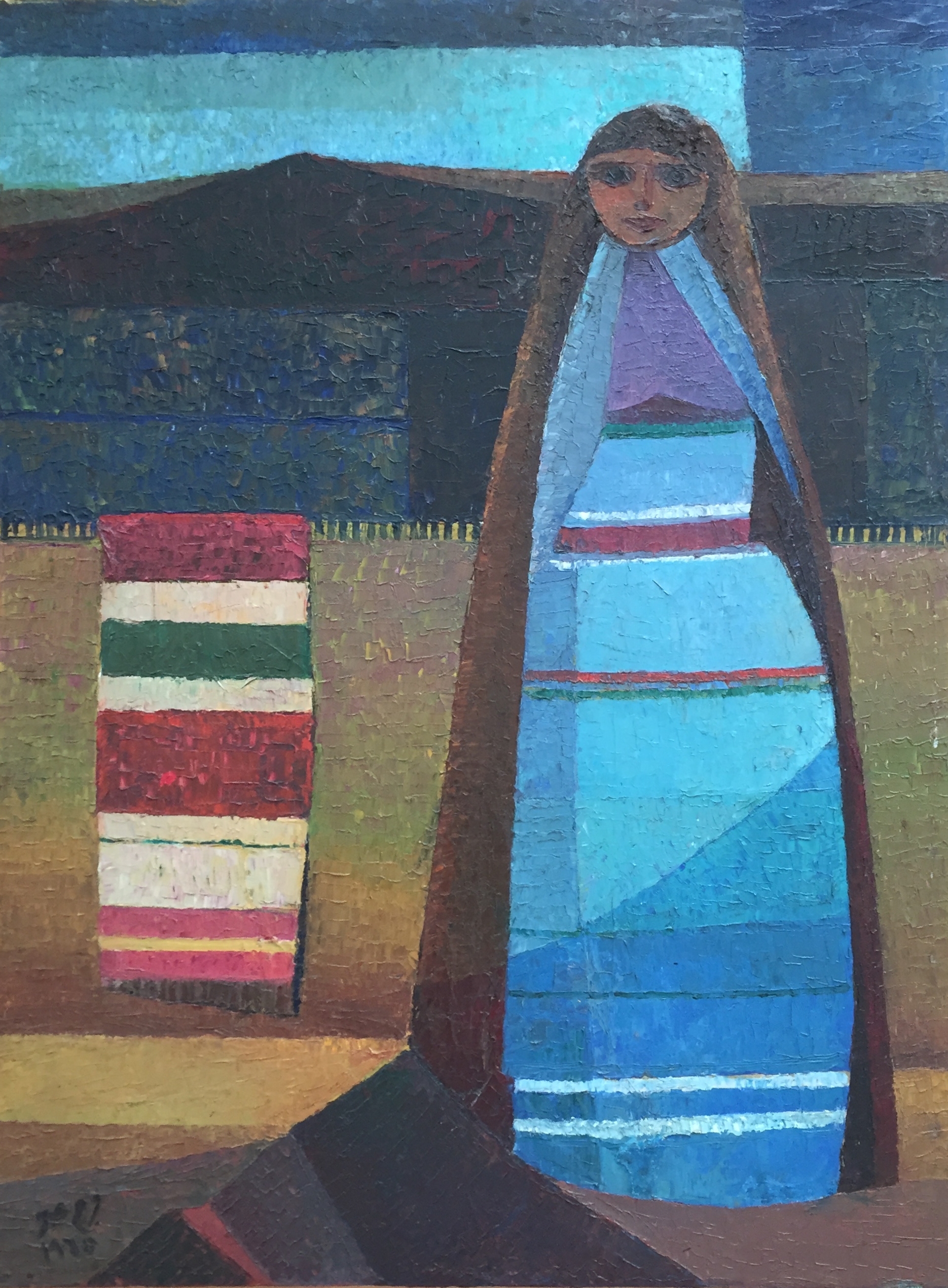
Faraj Abbo Al Numan, untitled, 1968. Oil on canvas. Image source , Private Collection - Toronto -2.
11. Association of Visual Artists:
The Association was founded in 1956, encompassing all artists, including painters, sculptors, potters, and architects. The first initiative to establish this association was led by the artist Khalid Al-Jadir, and the artists responded to his invitation and attended the first meeting at his house. The attendees included Jawad Saleem, Akram Shukri, Zaid Saleh, Faraj Abou, Naziha Saleem, Khalid Al-Jadir, Youssef Abdul Qadir, Nuri Al-Rawi, Kazem Haider, Nuri Mustafa Bahjat, Mahmoud Sabri, Alia Al-Qaraghuli, Ismail Al-Sheikhly, Mohammed Makia, Rifat Chadirji, Qahtan Al-Madfai, and Khalid Al-Qasab. The first elected president of the association was the Late architect, Mohammed Makia.
In 1956, the Association of Visual Artists inaugurated its first comprehensive exhibition and festival for all artists in several locations in Baghdad. The government granted them a 10,000 square meter plot of land at the entrance of Mansour district, and the architect Qahtan Al-Madfai volunteered to design the building. The association’s first activity was in 1957, a comprehensive festival for art in general and music which were held in different locations in Baghdad.
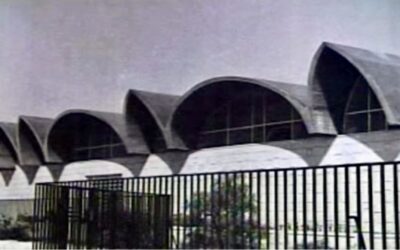
Association of Visual Artists in Mansour district, Baghdad. Architect Qahtan Al-Madfai, completed in 1967.
This is how the visual arts evolved and developed in Iraq
Influenced by various factors some of which we have mentioned in this article. We believe they were the main contributors to the formation and development of the visual arts. As much as the artists contributed to the development and modernization of art through their internal motivations and external influences, Iraqi society during that period also had a significant impact on artists in developing their art, as well as the role of the media represented by local newspapers and magazines.
The Next Generation
The next generation Includes so many familiar names, influenced by their predecessors in one way or another, but who have developed styles of their own. Some indeed maintained the different styles and some of them became internationally recognized. It is not an easy task to mention them all, rather, I have selected a few names, whom I think represent larger group, whose artwork maintained the basic principle of the “founding statement” of the “Baghdad Group for modern Art “ that no matter what their styles are, heritage should still inspire them”. At the same time keeping pace with modernity and using advanced technology, creating artwork that reflects their history whilst contemporary art movements influence their work.
They have made a significant contribution to Iraqi contemporary art and indeed the creative impetus for future generation.
Dia Azzawi; (1939), Ismael Fatah; (1934-2004), Rafi Nasiri (1940-2013), Ali Talib (1944), Mohammad Muhraddin (1938-2015), Salim Dabagh (1941-2002).
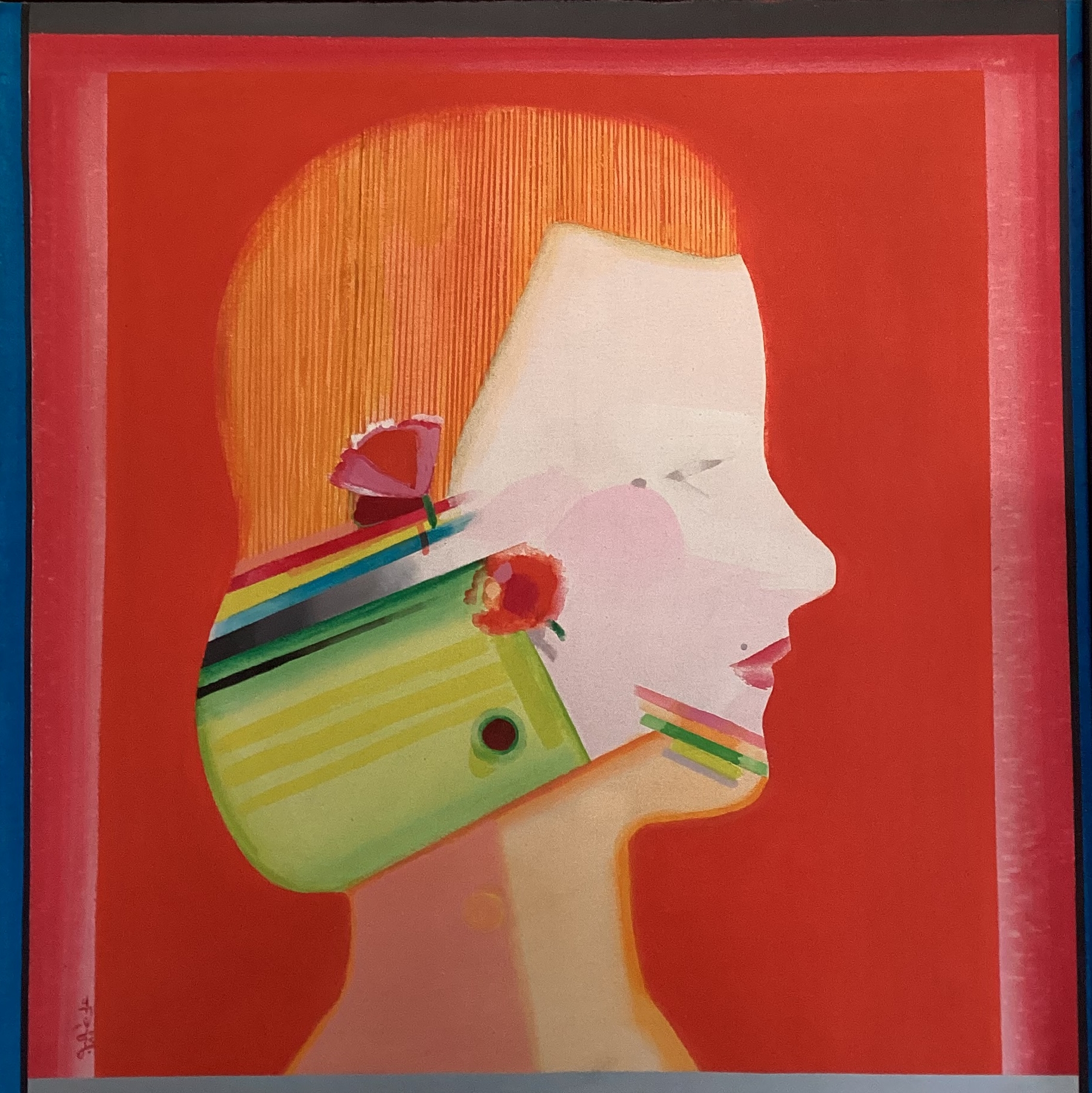
Ali Talib, ``Untitled``, 19XX. Oil on canvas . Private Collection 2 - Toronto
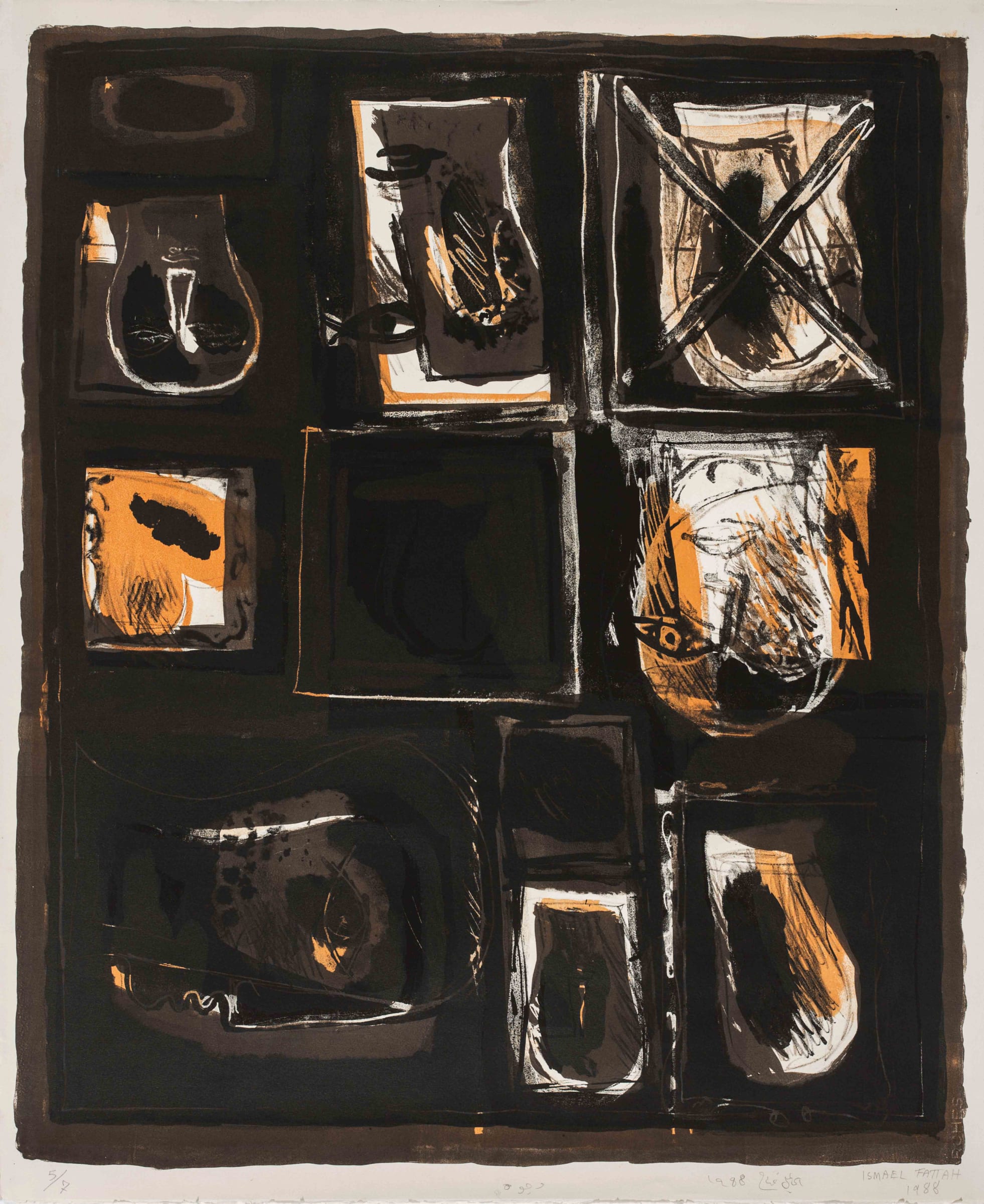
Ismael Fattah, ``Untitled`` 1988. Lithograph. Image Meem Gallery
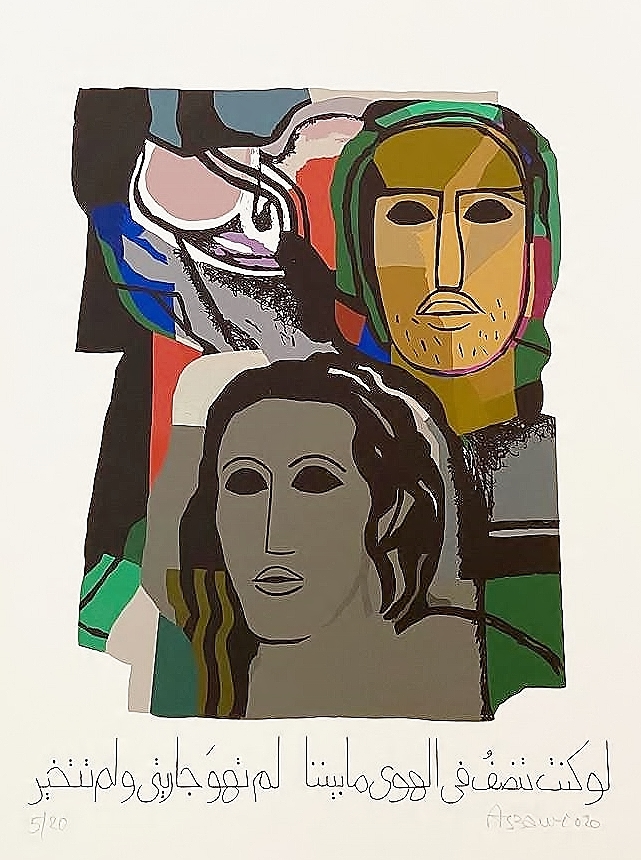
Dia Al-Azzawi `` Discourse between two Lovers``, 2022. Private Collection - Toronto

Salim Al-Dabbagh, ``untitiled`` 2010, mixed media, Image source, artist web site

Mohammad Mohridin, ``untiteled``, 1989, Acrilic on canvas. Private Collection - Toronto.

Rafa Al-Nasari, ``Homage to Ibn Zaydoon``, 2010. Acrilic /canvas. Image source Art in Iraq Today.

Ismeal Fatah

Salim Al-Dabbagh

Dia Al-Azzawi

Rafa Al-Nasiri

Ali Talib

Mohammad Muhraddin and Ismael Fatah
They have made a significant contribution to Iraqi contemporary art and indeed the creative impetus for future generation.
Cover Image: Jawad Salim, untiteled ” Two Figures”, 1951, Oil on canvas, Barjeel Art Foundation.
Bibliography
- Khalid Al-Qasab (Artistic Memories) 2007, published by Dar Al-Hikmah.
- Shawkat Al-Rubaie (Contemporary Art in the Arab World) 2014, published by Al-Warka publishing house.
- Rifat Chadirji (Al-Ekhaider and the Crystal Palace), 2nd edition 2013, published by Dar Al-Mada.
- Balkis Sharara (Thus Passed the Days) 2015, published by Dar Al-Mada.
- Najid Safwat : Author of “Fathi Safwat: Pioneer of Sculpture in Iraq”.
- Jabra Ibrahim Jabra (from several articles).
- Nabil Fathi Safwat (Skype conversation 2017) – Author of ” The Art of the Pen: Calligraphy of the 14th to 20th century”
- Lamiaa Al-Gailani. Archaeology and Politics in Iraq.
- May Mudhafar (Modern Art in Iraq: Communication and Differentiation) published by Dar Al-Fares for Publishing and Distribution, 2015.
- Walid Al-Jadir: “He Did Not Depart” (Khalid Al-Jadir).
- Wikepedia
- Mako: Electronic seasonal magazine published by Dia Azzawi.
About Yaqthan Chadirji
Yaqtahn is curently retired with special interest in arts and social studies. He has studied Bio Science in England, UK, specializing in the beer and beverage industry.

